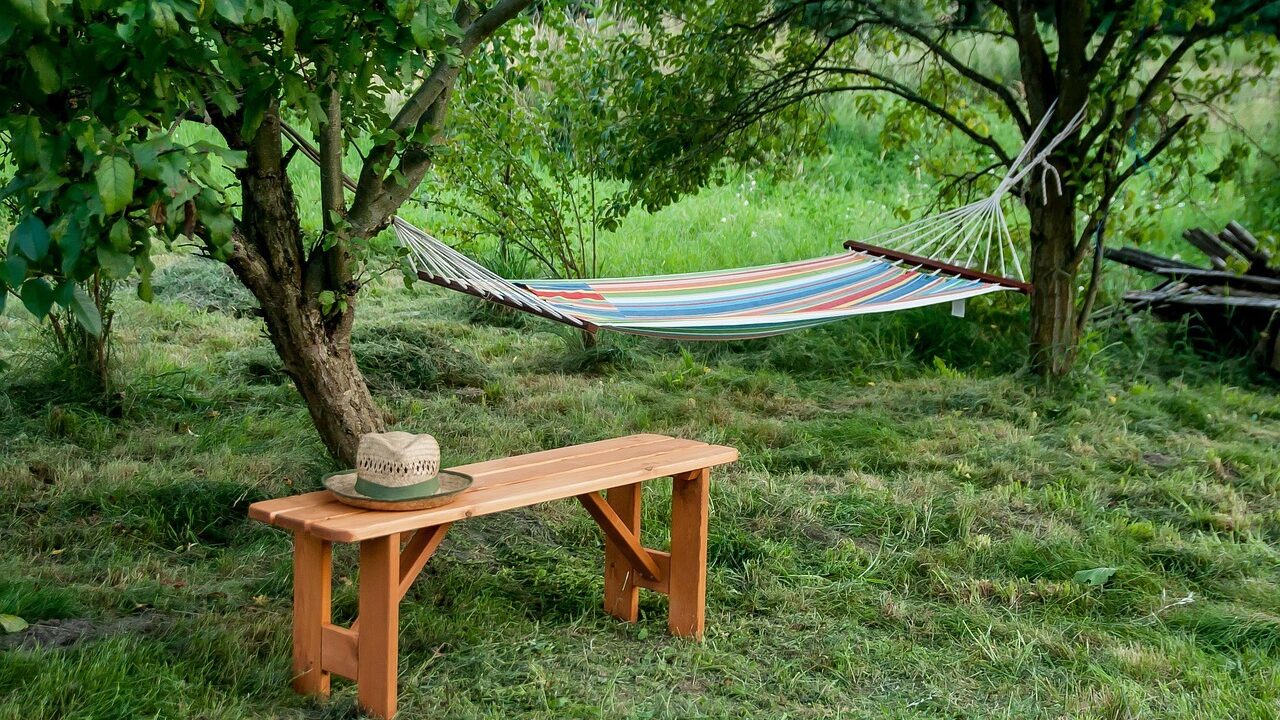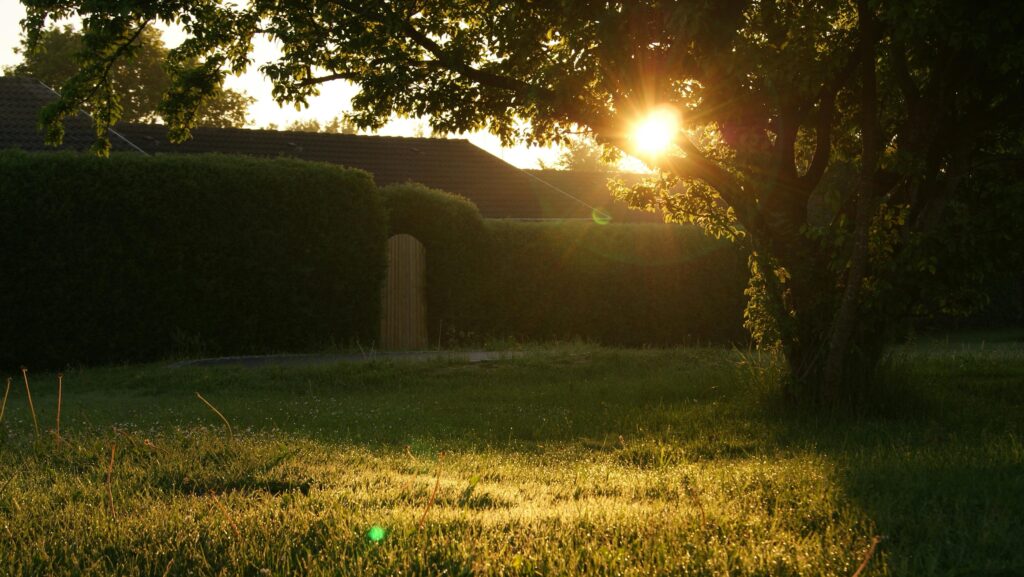There’s something timeless about a hammock swaying between two trees. Whether it’s the allure of a midday nap, a quiet place to read, or a cozy perch for stargazing, a backyard hammock setup turns an ordinary outdoor space into your personal retreat. If you’re wondering how to hang a hammock between two trees, this guide will walk you through everything you need to know — in plain, practical terms.

Choosing the Best Trees for a Hammock
The first (and most important) part of any tree hammock installation is picking the right anchors. Your trees should be:
- Sturdy and healthy (look for oaks, maples, or similar hardwoods)
- At least 6 inches in diameter
- Spaced about 12 to 15 feet apart, depending on the length of your hammock
Avoid softwoods like pine or any tree that looks weak or diseased. A healthy tree means a safe and long-lasting outdoor hammock setup — and keeps your yard looking great, too.
What You Need for a Backyard Hammock Setup
For a secure and tree-friendly installation, here’s what you’ll need:
- A hammock with carabiners or hooks
- Tree straps (also known as hammock suspension straps)
- A measuring tape
- A step stool or ladder (if your trees are tall)
Tree straps are far better than rope — they’re wider, reduce strain on the tree bark, and are usually adjustable. Plus, many public parks and campgrounds require them, so it’s good to get into the habit if you ever take your hammock on the road.
How to Secure a Hammock to Trees
Once you’ve found the right trees and gathered your gear, it’s time to hang. Wrap each strap around the trunk at about 4–6 feet off the ground. The exact height will depend on how far apart your trees are and how much sag you want in your hammock (spoiler: you want some sag).
After wrapping, clip the carabiners from your hammock to the loop ends of the straps. A general rule of thumb? Your hammock should hang with a nice curve, dipping just enough so that when you sit in it, the seat is about 18 inches off the ground. If it looks like a tightrope, it’s too high or tight; if it’s dragging the grass, bring those straps up a bit.
The goal is a 30-degree angle from the straps to the hammock body — the magic number for comfort, support, and safety.
Testing the Hammock (Gently!)
Before you leap in like it’s a beanbag chair, give your tree hammock setup a test run. Apply gentle pressure with your hand, then slowly sit down. If all feels good — no slipping, snapping, or creaking — you’re ready to recline and relax.
Pro tip: always check your straps and tree condition periodically. Nature changes, and safety is better than surprises.
Enjoy Your New Outdoor Hammock Retreat
Once it’s up, your hammock becomes more than a piece of gear — it’s a daily invitation to unwind. Add a pillow, a throw blanket, or even a small side table for your iced coffee or favorite book. With minimal effort, you’ve just created a relaxing backyard lounge area you’ll use again and again.
And if you’re not using your hammock year-round, just unclip it while leaving the straps in place. That way, it’s ready for action anytime the sun calls you out.
Now that you know how to hang a hammock between two trees, you’re well on your way to making the most of your backyard space. Whether you’re creating a nap nook, a reading retreat, or an afternoon hangout zone, this simple DIY project delivers big comfort with minimal effort.
If you’re looking for gear recommendations, tree-friendly hammock straps, or tips on finding the best backyard spot, leave a comment below — I’d love to help you set up your perfect hang.


